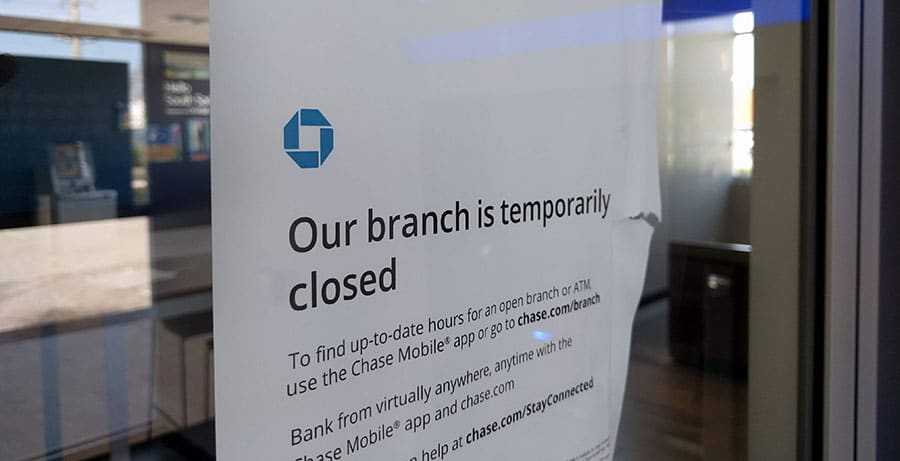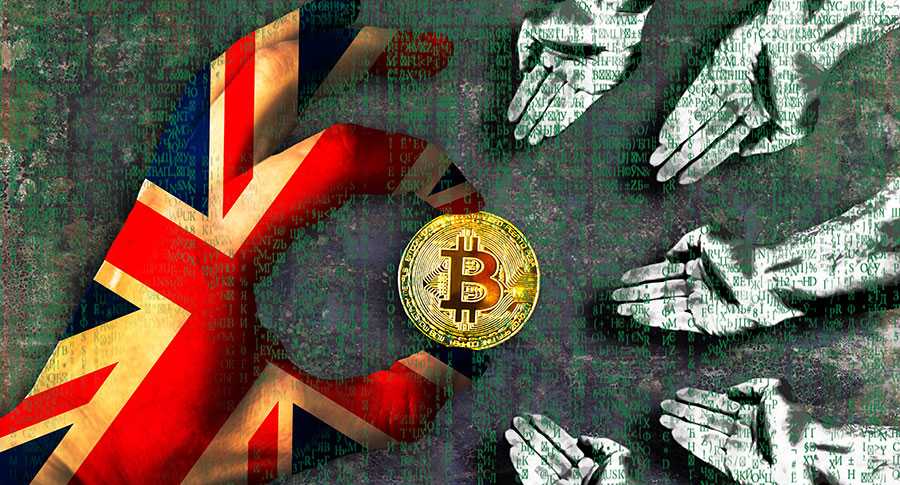Central Bank Digital Currencies (CBDCs): Complete Beginner's Guide
My grandfather knew the manager of his local bank branch - and most of the other staff there - by name. On his twice-weekly visit, they would chat and exchange pleasantries as he withdrew cash, paid in cheques and generally managed his finances.
I remember the assistant branch manager once showing him how to use the cash machine there and explaining to him how the shiny new debit card he’d been sent in the post worked. I also remember his assessment of this experience as we walked away: ‘a lot of nonsense.’ The world he lived in was changing and so too was the money that made it go around, but he preferred to stick with what he knew.

It’s been fewer than 20 years since he died but, when I think how much has changed in that time, it seems like more. Here in the UK and in the developed world as a whole, the use of cash is plummeting.
Cheques have almost completely died out and I for one can’t remember the last time I visited my local bank branch. I sure as hell couldn’t tell you the manager’s name. An increasing number of us manage most or all of our financial affairs online and we pay with a card when - or if - we visit a shop.
Online payments have gone through the roof in the last few years, with platforms like PayPal or Google Pay making the process almost absurdly easy. The pandemic, with its lockdown and social distancing measures, has only accelerated the pace of change. It’s never been easier to spend money.
The Death of Cash
We are moving towards a cashless society. Many see this as being a good thing and consider the use of cash to be outdated and inefficient. Others point out that this trend threatens some of the most vulnerable members of our society, who have many reasons for relying on cash. As with any upheaval, there are winners and losers.

The shift in the way we use and spend money is not confined to the high streets of the developed world. Across much of Africa, especially in remote areas, many people now pay for goods and services with their mobile phones and have little or no interaction with cash or banks.
In Asia, steps have been taken to try and reduce cash use. India has reduced the number of high denomination notes in circulation, while South Korea is phasing out coins altogether in recognition of the growing use of cards and smartphones.
Having a bank account is something most of us take for granted. However, across the world, including in developed nations like the UK, there are thought to be nearly two billion people who don’t have access to what you and I probably consider to be a basic service. The global banking system serves the interests of those lucky enough to have money. Those who don’t are all-too-often left out in the cold.
A change is Gonna Come
The financial crash of 2008 showed how wide the gulf was between the banks and the majority of ordinary people. We could only stand by and watch as almost nobody from the sector was held to account for what went wrong and the banks themselves were bailed out with money from our taxes.
It’s no surprise that this injustice helped give birth to perhaps the biggest threat to traditional finance. In 2009, Satoshi Nakamoto published the whitepaper for bitcoin, the world’s first and still foremost cryptocurrency.

Here at last was something to challenge the status quo: a digital currency that cut out all the middlemen and allowed users to transact directly with each other. They could do so anonymously and neither bankers nor tax authorities could intervene to take their cut. It was no surprise to see powerful figures in the banking industry going out of their way to bash bitcoin and predict its demise.
A lot has happened since Satoshi first outlined his vision. Bitcoin has exploded in price, thousands of other cryptocurrencies have sprung up and now we are seeing the explosive growth of the decentralised finance (DeFi) sector. One thing is certain: cryptocurrencies are now a feature of the financial landscape. The big beasts of traditional finance are starting to acknowledge this, as well as the need to work with them rather than against them.
The Next Step
For economists looking towards the future of money, the decline of cash and the rise of cryptocurrencies both point in the same direction. Our lives are becoming ever more digitalised, as we spend more and more time online. The money and financial systems of the future will need to acknowledge this fact if they are to remain relevant and useful to us. The world my grandfather lived in is gone and won’t be coming back.

Across the world, central bankers and policy-makers are taking note of the change. There is a growing realisation among many of them that the concept of digital currency needs to be brought into the mainstream. The idea may once have been seen as a threat, but now its potential is becoming apparent. Thus, the idea of digital currencies issued by central banks may soon become a reality.
Why go Digital?
Central banks have their reasons for wanting to phase out cash, though it is unlikely they will want to get rid of it altogether. Cash is often associated with parts of the economy that are hard to regulate and, crucially, hard to tax. Criminals, money launderers and those wanting to avoid paying tax all make extensive use of cash, which is hard for the authorities to keep track of. Limiting its use thus helps starve the black economy of oxygen.
Cash is also expensive to produce and distribute. Constant innovation is needed to keep ahead of advances in counterfeiting technology, while the costs of transporting and safely storing it are high. The Bank of England estimates that it spends £40 million a year replacing damaged notes and its rollout of new polymer banknotes over the last few years has been an expensive process.

The downsides of cash, coupled with the rise of cryptocurrencies, makes the idea of issuing digital currencies an intriguing one for central banks. But, before we look into those banks and countries that are considering such a move, we need to draw an important distinction.
Digital vs Crypto
Don’t be fooled into thinking that the banks have suddenly embraced cryptocurrencies with open arms. Bitcoin, ether and the thousands of other coins out there are still anathema to the folks in suits. What is being embraced is the technology behind them and the aspects of them that can be advantageous to the current system.
Yes, the banks are waking up to the promise of blockchain and how it can be harnessed to power digital versions of established fiat currencies. Note the distinction: digital, NOT crypto. These mooted digital currencies will not be mined through solving cryptographic puzzles, and it’s unlikely that they will give their users anonymity.
Their value will be pegged to that of the national currency they represent and their supply will be regulated by the central banks that issue them. And, of course, those central banks will want them to be traceable and taxable.

Banks across the world have been working on the idea of central bank digital currencies (CBDCs) for some time and a few have even completed pilot schemes. The Central Bank of Uruguay ran a pilot from November 2017 to April 2018 of its e-Peso, with transfers facilitated by mobile phones. As well as the Central Bank, a number of private companies, including IBM, took part in the trial. Results are still being evaluated and the scheme was considered a success.
South America could prove particularly receptive to this type of initiative, as several countries there, most notably Venezuela, have been struggling with hyperinflation and the economic devastation it brings with it. Crypto has provided a lifeline here and Latin American governments will be hoping that digital currencies may be able to do even more.
In Sweden meanwhile, where over 80% of transactions are electronic, a trial of the e-krona is ongoing and due to end early next year. The Riksbank of Sweden has been quoted as saying that it believes that ‘a scenario within the not-too-distant future, in which cash is not generally accepted, cannot be ruled out.’

The most important pilot scheme of all is that currently underway in China, a country which has always viewed cryptocurrencies with deep suspicion. As such, the People’s Bank of China first began considering the idea of issuing its own digital currency back in 2014, long before the crypto bull run kicked into gear in 2016/17. The thinking was that, if digital currencies were going to change the world, then the People’s Republic needed to be ahead of the curve.
In 2017 its ‘Digital Currency/Electronic Payments’ (DC/EP) project was launched as part of a broader scheme to upgrade the country’s technology sector. The heightening of tensions with the US thanks to Donald Trump has spurred the project on, as China seeks to shrug off its reliance on American finance.
A pilot scheme was begun across four Chinese cities earlier this year and later expanded to include 28 more. It appears to have been successful and a formal launch is mooted for sometime towards the end of this year, though the coronavirus crisis may have set this back. Nevertheless, analysts predict that it could succeed in largely phasing out cash by 2022.
All Eyes on China
The success or otherwise of China’s experiment will be watched keenly across the world. The central banks of many other countries are researching and in some cases actively developing their own CBDCs. These projects will almost certainly be stepped up if the Chinese pilot scheme proves successful.

Canada, Brazil, South Africa and France are all reported as having schemes in development, while in the UK the Bank of England is actively researching the possibility of taking sterling digital.
That’s not to say there aren’t sceptics. While there’s an impressive list of countries either researching or developing CBDCs, several are not. These include the likes of India and Italy, as well as several nations perceived as being particularly tech-savvy like Finland, Estonia, Lithuania and Denmark.
All the countries have CBDC programs that have been allowed to languish, with several citing concerns about the viability of the underlying technology as a factor. Others claim that the benefits of CBDC schemes cannot be said to outweigh the potential risks. That list of naysayers may be as telling as the list of those jumping aboard the CBDC bandwagon.
Pros & Cons
There can be no doubting the potential CBDCs have to continue the breakneck pace of change that is sweeping through the world of finance. As cash use dwindles, digital versions of existing fiat currencies could fill the gap it leaves behind. It is hard to imagine a different scenario.
If this change has the desired effect: if it is indeed able to reach those billions of unbanked people across the world and bring mainstream finance to them, then this is surely a good thing. If by gradually phasing out cash and replacing it with something more traceable, central banks are able to limit funding for organised crime and terrorism, then so much the better.

CBDCs could potentially offer greater control over the monetary system and may be a valuable tool against future market crashes and hyperinflation. They could also speed up retail payments, allowing money to move more quickly and easily around the world.
Yet there is still plenty that we don’t know. Blockchain promises much and its cheerleaders tout it as a safe, secure system on which to build the technology of tomorrow. But how safe and how secure? If ways are found to compromise it then CBDCs could become a glaring point of weakness for those states that implement them.
The question of disintermediation also keeps many bankers awake at night. Could CBDCs negate the need for retail banks? If they follow the lead of cryptocurrencies then an explosion in the growth of peer-to-peer transactions could make many banks redundant. Could the global financial system withstand such a blow?

Finally, some countries have questioned the need for CBDCs by pointing out that the current systems we have in place are already pretty damn efficient. Online payment platforms make it easy for so many of us to send money to all corners of the globe, while the old days of traveller’s cheques and suitcases full of foreign currency are long gone for those travelling abroad.
Do we really need the disruption that CBDCs will inevitably cause before their use becomes widespread? Many see the question as a solution in search of a problem.
Conclusion: Buckle up
It would take a brave soul to bet against the eventual introduction of CBDCs across the world. They are a natural meeting point for the worlds of traditional finance and cryptocurrencies and almost certainly represent the next leap forward for the global financial system. World leaders, economists and bankers are all coming to realise that the future is digital.
Much will depend on the success of China’s trial scheme. If all goes well in the People’s Republic then the rest of the world won’t be far behind. Other trials in South Korea, Thailand and Ukraine may well offer more valuable insights and the reports from Uruguay and Sweden will make for fascinating reading. But make no mistake, China will lead the way as it continues to vie with the US for economic supremacy.
The way people across the globe earn, store and spend money is changing all the time and it won’t pay to get left behind. We will have to hope that CBDCs can empower those at the bottom of the pile and give them access to the financial products so many of us consider a birthright. Even it that does happen, I wouldn’t expect my grandfather to have been impressed.
Disclaimer: These are the writer’s opinions and should not be considered investment advice. Readers should do their own research.
